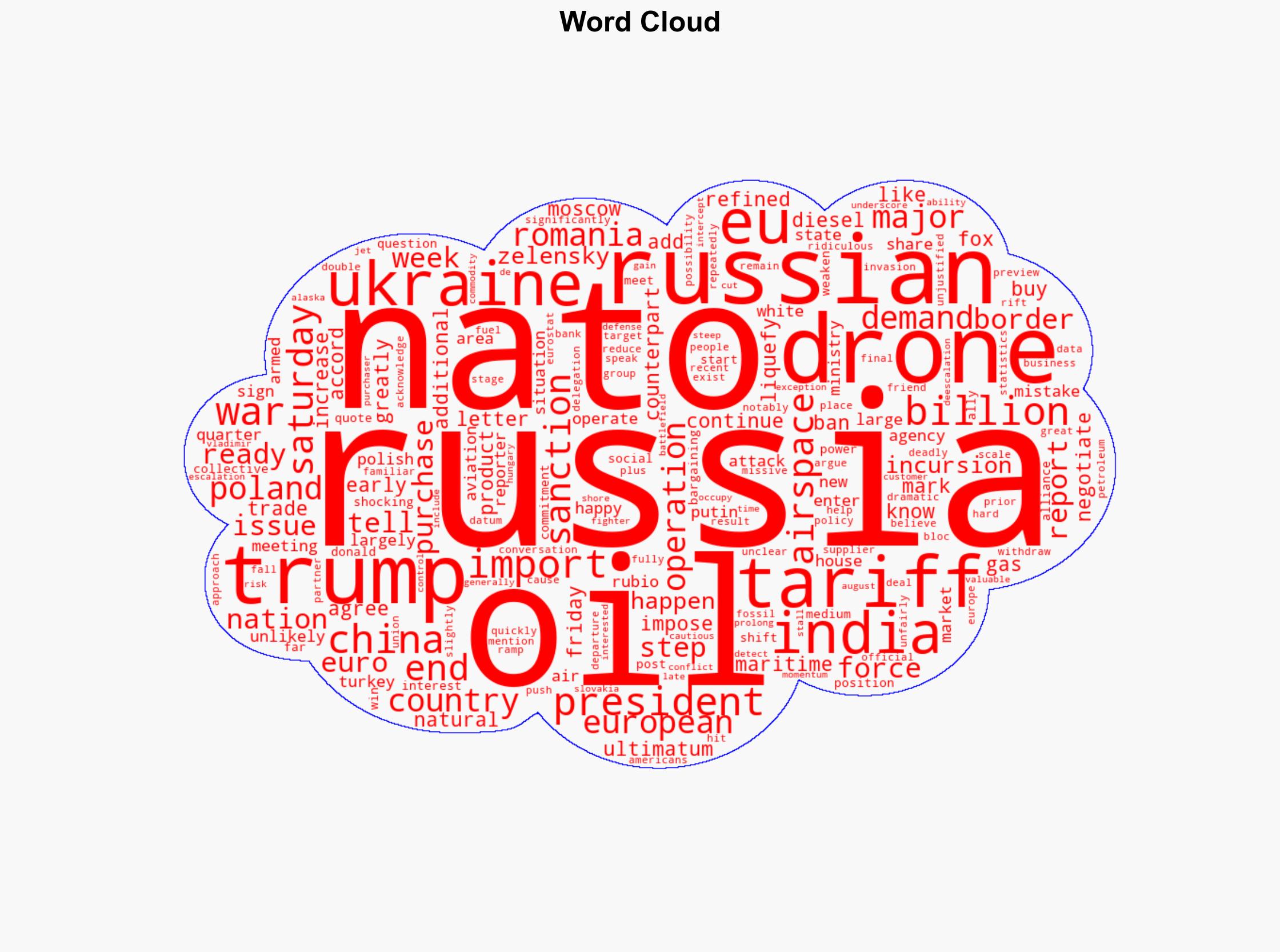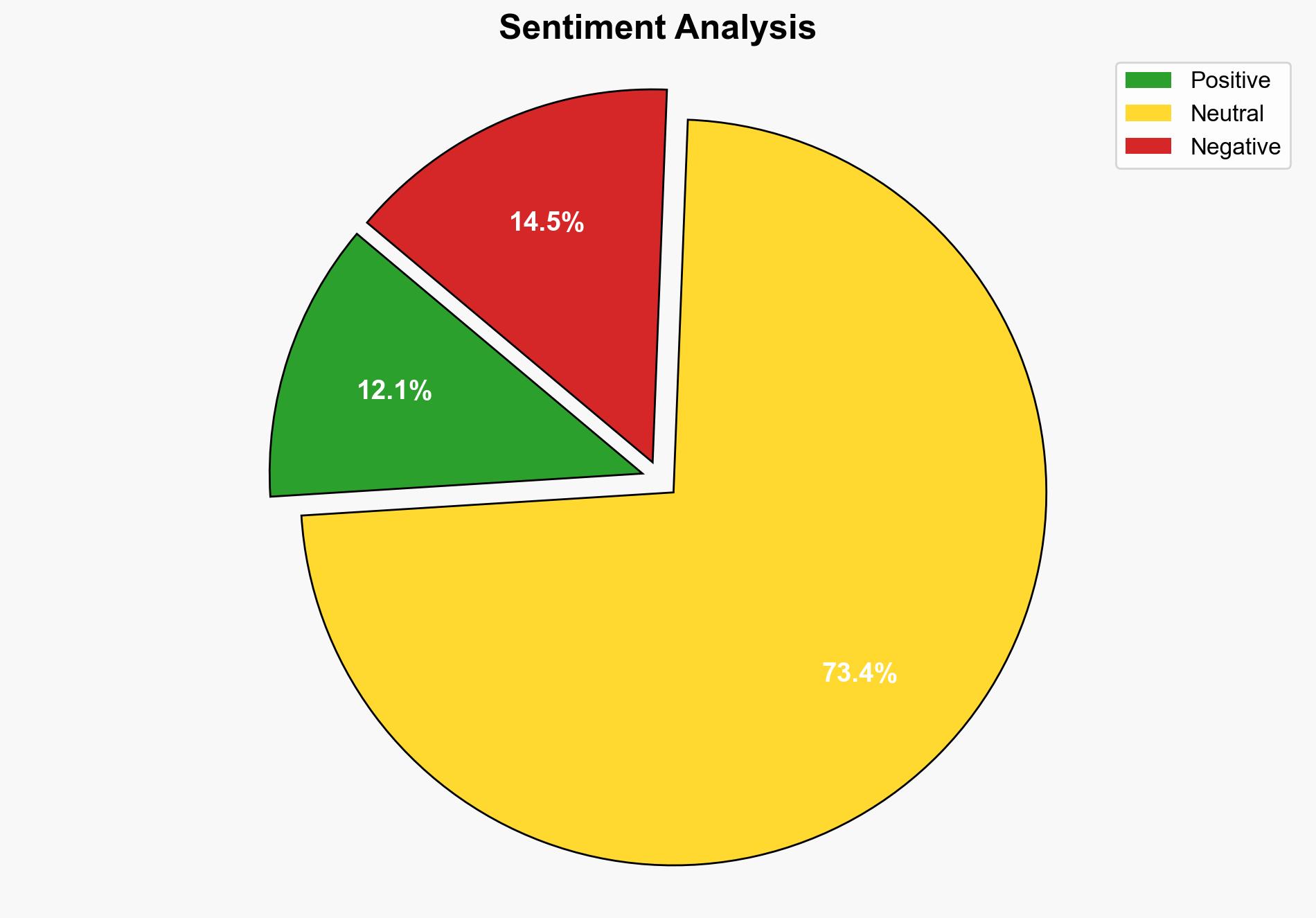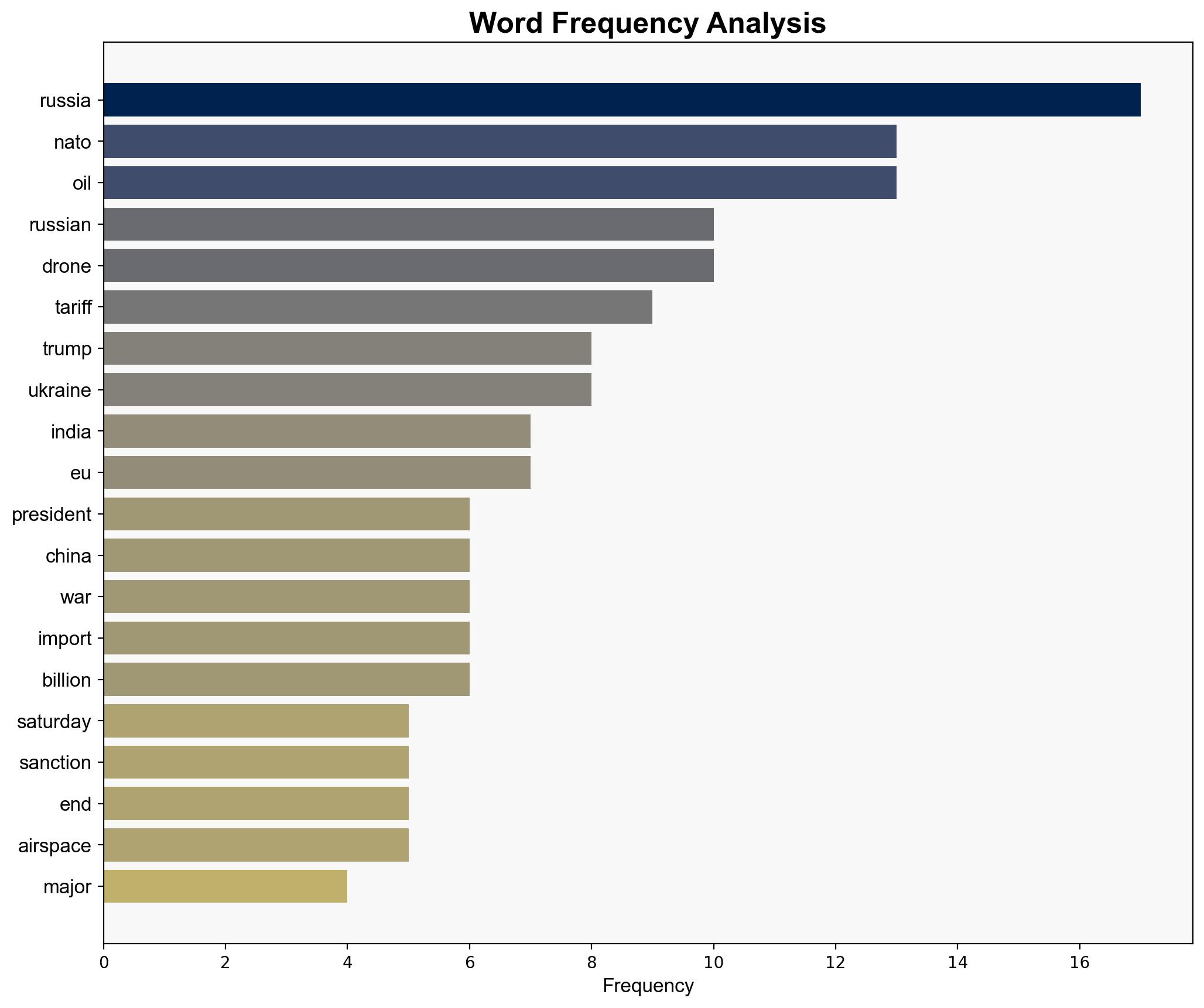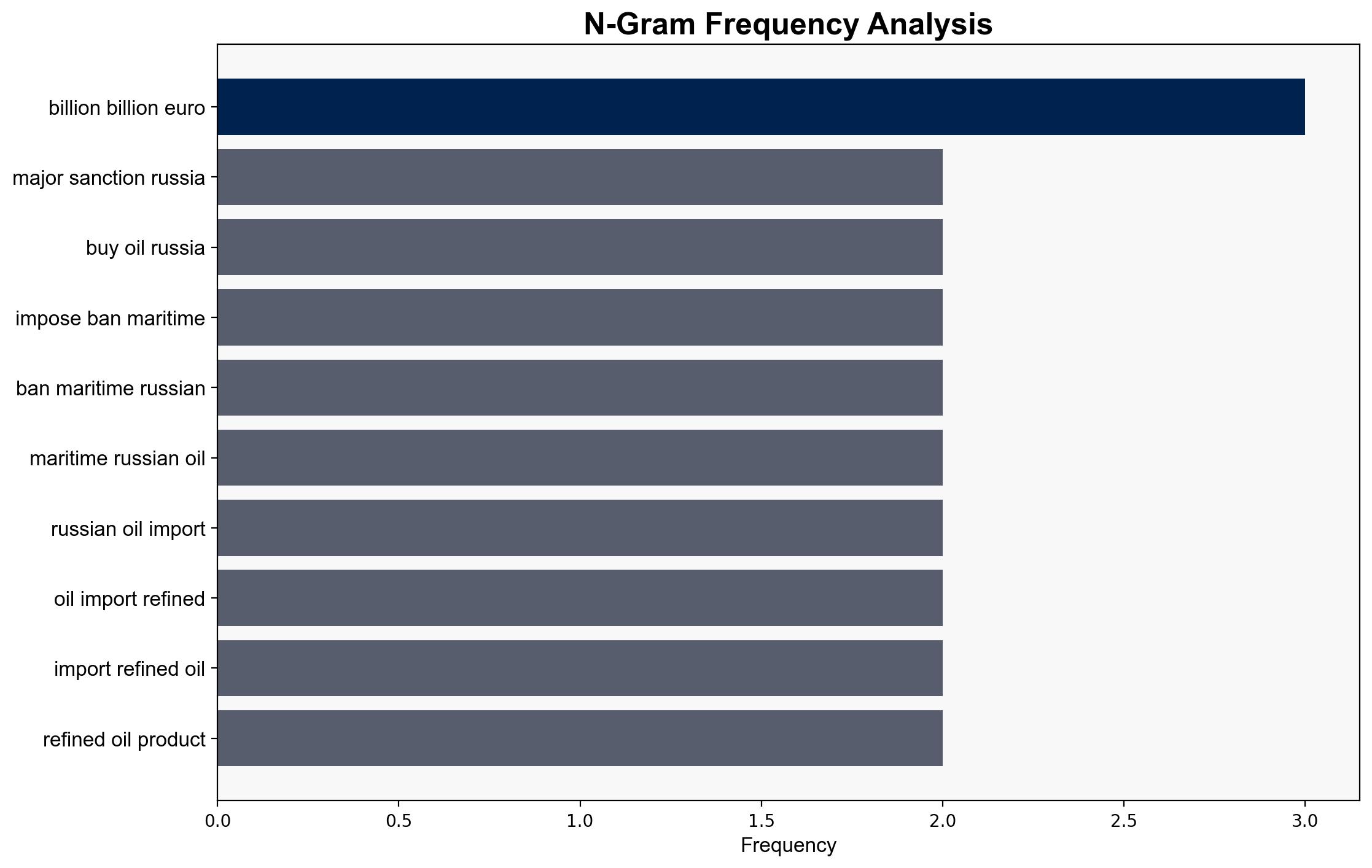Trump issues an ultimatum for NATO countries on Russia sanctions – CNN
Published on: 2025-09-13
Intelligence Report: Trump issues an ultimatum for NATO countries on Russia sanctions – CNN
1. BLUF (Bottom Line Up Front)
The strategic judgment indicates a medium confidence level that President Trump’s ultimatum to NATO countries regarding Russian sanctions could either strengthen NATO’s collective bargaining position or cause internal divisions within the alliance. The most supported hypothesis suggests that the ultimatum is a strategic move to pressure NATO allies into a unified stance against Russia. Recommended action includes diplomatic engagement to assess alliance cohesion and potential economic impacts.
2. Competing Hypotheses
1. **Hypothesis A**: Trump’s ultimatum is a strategic maneuver to unify NATO against Russia by leveraging economic sanctions and reducing dependency on Russian oil. This approach aims to consolidate NATO’s negotiating power and expedite an end to the conflict in Ukraine.
2. **Hypothesis B**: The ultimatum could lead to divisions within NATO, as differing national interests and economic dependencies on Russian oil may cause friction among member states. This scenario risks weakening the alliance’s collective response to Russian aggression.
Using ACH 2.0, Hypothesis A is better supported by the alignment of Trump’s demands with existing EU sanctions and the historical context of NATO’s collective defense strategy. However, Hypothesis B cannot be discounted due to the varied economic interests of NATO members.
3. Key Assumptions and Red Flags
– **Assumptions**: It is assumed that all NATO members have the capacity and willingness to reduce Russian oil imports without significant economic disruption. Additionally, it is presumed that increased tariffs on China and India will not adversely affect global trade dynamics.
– **Red Flags**: The lack of clarity on how NATO countries will compensate for reduced Russian oil imports and the potential for economic retaliation from China and India are significant concerns. There is also a risk of overestimating NATO’s cohesion in the face of diverse national interests.
4. Implications and Strategic Risks
– **Economic Risks**: Potential disruptions in energy markets and increased costs for NATO countries reliant on Russian oil.
– **Geopolitical Risks**: Strained relations within NATO could embolden Russia and complicate diplomatic efforts to resolve the Ukraine conflict.
– **Cyber and Psychological Risks**: Increased cyber threats from Russia as a retaliatory measure and potential propaganda campaigns to exploit NATO divisions.
5. Recommendations and Outlook
- Engage in diplomatic dialogue with NATO members to assess readiness and capacity to implement sanctions without significant economic fallout.
- Develop contingency plans for energy diversification and increased security measures against potential cyber threats.
- Scenario Projections:
- **Best Case**: Unified NATO response leads to effective sanctions, pressuring Russia to de-escalate.
- **Worst Case**: Internal divisions weaken NATO, leading to prolonged conflict and economic instability.
- **Most Likely**: Partial alignment among NATO members, with some countries seeking exemptions or alternative arrangements.
6. Key Individuals and Entities
– Donald Trump
– Vladimir Putin
– European Union (EU)
– NATO member countries
7. Thematic Tags
national security threats, economic sanctions, NATO cohesion, energy security, geopolitical strategy





